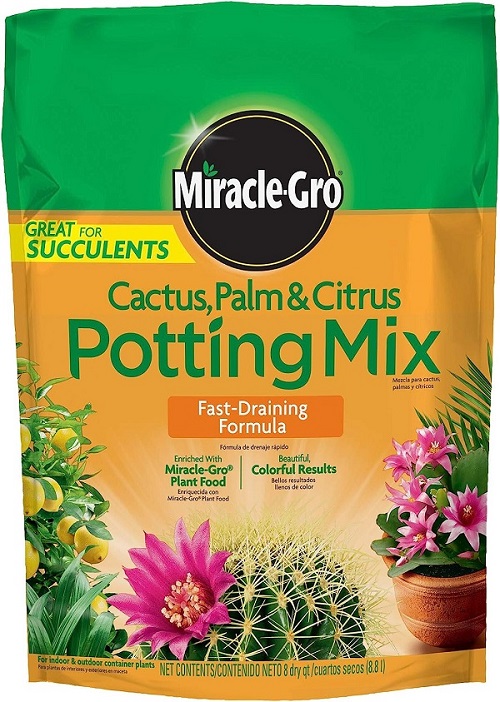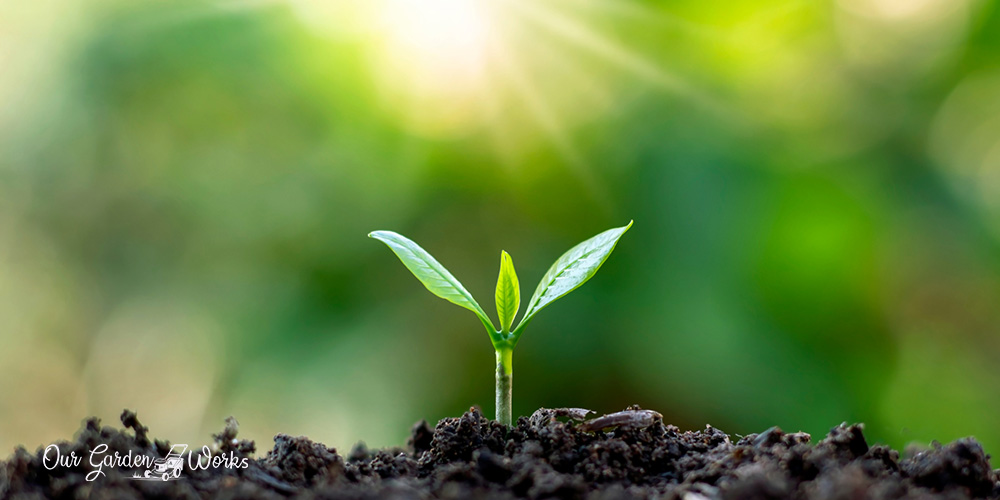Novice gardeners and plant lovers are often confused about the differences between potting soil vs. topsoil. We often think that all the kinds of dirt that plants use are called soil.
However, in the horticultural realm, several soil classifications of soil exist which serve specific purposes in the garden, farms, and landscapes.
In this post, we will share everything you need to know about the potting soil that you use on your houseplants and why it’s only designed for container gardening.
We will also share the vague definition of topsoil in the horticultural field and the various ways it’s used in the landscape and the agricultural sector.
Topsoil: What you should know
Topsoil may seem to be a straightforward term used to identify the surface-level part of the Earth’s crust. It is usually the dirt you see in the ground that has been exposed to extreme weather conditions and has been in the ground for several years.
It is typically a combination of different organic materials that decomposed, ground, and processed through time.
Purpose: Where and when is it used?
The term top soil in itself is a vague term about multi-purpose dirt. It is used for different purposes and found in different places, such as
(1) Farm fields: Topsoil is the base soil material used for farm fields and other agricultural areas. They modify its structure and make it more conducive for growing different types of crops.
Oftentimes, farmers use mechanical equipment to break up the clumps of clay, silt, and rocks for core aeration, better water drainage, and improved soil quality.
(2) Forest grounds: The topsoil found in the forest is the most nutritious medium for plants. It is filled with decayed vegetation, animal carcass, and nontoxic materials that help maintain the soil microorganisms in tip-top shape.
The topsoil in the woods has a dark color which is a visible indication of how good they are for almost any type of plant.
Lawn fillers to adjust lawn terrain
Due to the rough nature of topsoil, it is also amenable to improving yard lawn levels. It is usually done when the lawn loses its level ground due to:
- Water runoff and pooling rainwater.
- Accumulation of worm castings.
- Freeze/thaw cycle.
Topdressing lawns
Topsoil, sand, and compost are common materials used for top-dressing lawns.
Topdressing is a lawn care strategy that helps improve grass growth. It is often used as a practical solution in solving soil and grass problems such as
- Thatching.
- Poorly growing grass.
- Nutrient-deficient soil.
Fillers for planting trees
Topsoil is usually used in filling in hallow parts of the newly planted trees. It has a more compacted texture that helps keep the planted trees standing and staying upright against strong winds.
Construction material for pavement finish-grading (pulverized)
Topsoil is also used in the construction field for finish grading.
Finish grading is the preparation of the ground using rough-grade and fine-grade materials to meet the elevation requirements of a lawn or a construction project.
Topsoil belongs to the fine-grading process where it is pulverized to contour or shape the ground and achieve a smooth and sleek finish. It is often placed after the subsoil and rough-grade materials.
Plant or garden beds
Gardeners use topsoil for garden beds as a cheaper alternative to potting soil. It is often processed and mixed with nutrient-rich organic materials like compost and peat moss to improve its soil structure.
Typically, topsoil is sold for around $44 to $59 per cubic foot, depending on the type of topsoil that you want for your garden..
Composition/Texture
The composition of topsoil depends on where it is sourced. For example, topsoil from the woods would contain more composted or decayed organic materials than the ones you’ll find in garden stores or topsoil providers. However, the majority of topsoil used in the community contains:
- Sand.
- Clay.
- Silt.
- Ground rocks.
- Dried leaves and plant parts
Oftentimes, topsoil is compacted and filled with rocks. So, gardeners use tillers and aerators to remove debris like woody dead roots, stumps, and rocks or boulders. It is also notorious for having traces of weed seeds, fungus, and overwintering pests.
Topsoil from untouched fields and woodlands may contain a compost-like texture that came from years of decayed organic materials like dried leaves.
Most commercial garden supplies often try to mimic the composition of woodlands to provide a better soil environment for plants.
Quality
Topsoil, in a nutshell, is not ideal for plants without adding nutrient-rich organic materials and improving water-holding capacity.
It needs modification and a lot of treatment before it becomes a good medium for your outdoor plants due to the following soil characteristics:
- Dense and muddy texture when wet.
- May contain weed seeds, overwintering pests, and fungal diseases.
- Poorly draining due to excessive clay content.
How to improve the topsoil for plants
Topsoil is affordable and versatile that’s why so many gardeners are taking on the challenge of using it in their gardens.
Good soil produces a good harvest and topsoil may need the following treatments before it becomes a new home for your vegetable or flowering garden:
- Turn, break clumps of dirt, and aerate the soil.
- Add sand, peat moss, aged animal manure, and compost.
- Test soil acidity and adjust soil pH levels based on your plants’ needs.
- Plant clay-friendly plants like radishes and encourage earthworms into the soil.
Before doing anything on the soil, it’s best to use the soil and watering requirements of the plants that you wish to grow as a guide in modifying the soil structure. Some plants hate wet feet while some thrive in a moist soil environment.
Some plants also require acidic soil and without enough acidity, their roots will fail to get nutrients from the soil, leading to root chemical burns and nutrient deficiency.
Potting soil: The good & the bad
Potting soil or potting mix is not considered soil but a compilation of organic materials responsible for different aeration and drainage functions.
Potting mixes are soilless and weigh much lighter than topsoil. They are made of carefully selected ingredients to adjust to the container growing environment which requires optimal drainage.
Purpose:
Unlike topsoil, potting soil is used for a specific type of plant or during a specific growth stage of a plant.
They are easy and ready-to-use growing mediums that are already curated to suit the soil requirements of a specific plant.
Potting mixes can be used in raised beds but it can be too expensive, which makes topsoil a viable alternative. It’s more suitable for use on
- Plant boxes in windows and fences.
- Planters.
- Hanging baskets.
- Orchid pots attached to trees.
- Urban planter boxes(vertical boxes used in small city spaces).
Composition
Potting soil is composed of organic materials that help balance the soil drainage, soil acidity, and optimal water retention based on the needs of the plants.
It is designed to be more fast-draining to match the container-growing environment, which is prone to overwatering issues.
Unlike the free-flowing water in-ground growing spaces, potting mixes have materials that replace water with air as soon as it drains from the pot. Therefore, they are lighter and fluffier than the typical topsoil.
Most potting mixes contain the same ingredients but in different proportions. Here are the common materials that you’ve surely seen in commercially available potting mixes:
- Peat moss or sphagnum peat moss.
- Perlite.
- Vermiculite or worm castings.
- Pine bark.
- Composted sawdust.
- Coco coir.
- Coconut husks.
- Shredded tree bark.
- Compost.
Types of potting soil
Here are some of the classifications of potting soil based on their purpose:

- Seed-starter potting mix: These types of potting mixes contain light materials that allow seeds to spread their developing roots.
- Plant-specific potting mix: These potting mixes are specifically made for certain types of plants in a ready-to-use formula. They are usually curated by gardening experts to help new gardeners who don’t have extensive knowledge of soil structure modification.
Here are some of the widely available potting mixes in the market and their contents:- Cactus and succulent potting mix: Sphagnum peat moss, softwood bark, sand, perlite, and fertilizer.
- Orchid potting mix: Fir bark, hardwood charcoal, sphagnum peat moss, and sponge rock
- Rose potting mix: Coco coir, worm castings, sawdust, bone meal, feather meal, kelp flour, dolomite lime, gypsum.
- Tomato potting mix: Canadian sphagnum peat moss, peat humus, and earthworm castings.kelp meal, alfalfa meal, yucca extract, vermiculite, dolomite lime, and feather meal.
- Fiddle leaf fig potting mix: Sphagnum peat moss, sand, perlite, biochar, coco coir, green compost, Aged bark, perlite.
Quality
One of the best features of potting mixes is they are sterile.
Commercially-available potting mixes are treated with heat to kill all pathogens and weed seeds that may cause contamination. They are also carefully engineered by suppliers to cater to specific types of plants.
Potting mixes are convenient to use and beginner-friendly. Most of them contain slow-release fertilizer that can feed your plants for 3 to 6 months. They rarely need to be modified, unless you want to adjust their water-retaining capability.
Aside from being pricey, potting soil or mixes can degrade after a few years. Other organic materials can decompose after two to three years. Therefore, you need to replenish the potting soil once they decrease in volume after several years.
Potting soil vs. Topsoil: Which one to choose?
A lot of people are often comparing the benefits of using potting soil vs. topsoil and vice versa. However, they should not be compared at all. Each of them is used depending on the location, plant type, and purpose.
The rule of thumb is to check the soil requirement of the plants you wish to grow. If they are outdoor plants that can withstand the climate in your region, then you may use topsoil. Amend it with organic materials and improve its soil structure.
If you want to grow small plants that require a specific blend of potting materials, then it’s safer to use pre-measured potting soil. Oftentimes, newbie gardeners experience overfertilization issues because they apply fertilizers to potting mixes already enriched with fertilizers.
Frequently Asked Questions (FAQs)
What is better potting soil or topsoil?
It depends on where you’ll use them. Topsoil is beneficial for landscaping since it can help contour and improve elevation in lawns. They also make an affordable option for building planter boxes and vegetable garden beds. Potting soil, on the other hand, is convenient to use on specific types of plants like houseplants and epiphytic plants. Some potting mix brands also included fertilizers in their products, which helps you save on gardening costs.
Can you use topsoil instead of potting soil?
Yes, but you need to do some modifications. Topsoil usually lacks the fluffiness and water drainage that potted plants need to thrive. So, you’ll need to change its soil structure and amend it with nutrients and water-draining materials like perlite and sand.
Final Thoughts
We hope that this post helped you with the advantages of potting soil vs. topsoil and vice versa.
It can be intimidating to be exposed to new jargon in the gardening community. However, once you know their purpose and how they work, you’ll master them well.
Who knows, with all the things you learned from this post, you might end up making your concoction of potting mixes from scratch!
Professional gardens are doing it for years and they know exactly what to change or modify when the problems are often causing overwatering issues.
We hope that this post helps you achieve that pro level in gardening and learn more about plant care.
If you find this post helpful and informative, please don’t hesitate to share this post with your friends and family and help them learn more about garden soil and potting mixes.
